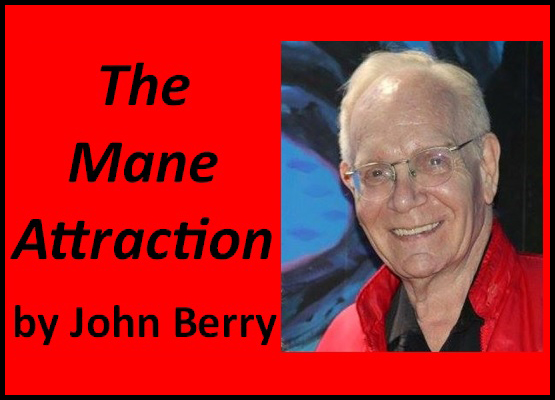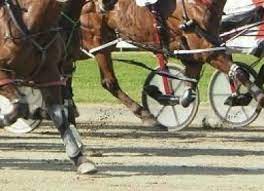When I first started going to the harness racing events 64 years ago, the crowds were healthy, the betting was fierce, and the pools were strong.
My second homes were the bowling alley and the racetracks like Sportsman’s Park and Maywood Park…with Washington Park joining up in late 1962.
 It was an exciting time trying to get my $2 to win on Dr. Hyslop, Poplar Sonny, Selka Chief pr Rockette Forbes, among others,
It was an exciting time trying to get my $2 to win on Dr. Hyslop, Poplar Sonny, Selka Chief pr Rockette Forbes, among others,
Meeting drivers like Bob Williams, Lou Rapone, Gene Riegle, Curly Smart, Dwayne Pletcher and Bob Farrington was, in these eyes, like meeting Babe Ruth or Lou Gehrig, neither of whom I ever met.
In those days, we had win, place and show wagering and a daily double on the betting menu and, by the late 1960’s, other “exotic” wagers were added like the “quinella” (not so exotic), “exacta” (a bit more exotic) and “trifecta” (still more exotic).
At some venues, they had a “Big Q,” a wager necessitating the selection of back-to-back quinellas, which produced very healthy pools.
Per capita figures were strong and, if a Saturday night at Sportsman’s Park had 15,000 fans on hand, you could figure the handle at $1,500,000, give or take a hundred thou…
Of course, it took time for the pari-mutuels to grow when harness racing was in its “night-time” infancy…but, once the volcano of harness racing erupted, the lava flow was unstoppable.
When Roosevelt Raceway opened in 1940, they had a 27-night meeting with an average attendance of 2,784 and TOTAL handle for those 27 nights at $1,200,088—an average per night handle of $44,448 and per capita wagering at $15.96—yes, fifteen dollars and 96/100 cents in check writing terms.
Fast forward to 1946, when the Steve Phillips mobile starting gate came into play, the total handle was $53,839,659 with an average per night handle of $441,309 and per capita betting up to $45.86.
The 1960’s through the mid-1970’s is really when harness racing enjoyed its heyday at Roosevelt and Yonkers when wagering peaked at $314,250,315 at Roosevelt in 1974 with an average nightly handle of over $1.9 MILLION and per capita over $120.00.
There were warnings signs before that, though, as average nightly attendance, which had vaulted well over the 20,000 by 1957, had slacked off to under 15,000 by 1976—the “blame” partially caused by new competition in the form of The Meadowlands about 38 miles away.
It was the same story for Yonkers.
The “modern day” Yonkers opened on April 27, 1950.
Actually, Yonkers featured thoroughbred racing on a one-mile oval until 1942 but wartime and gasoline rationing ended that, and they were forced to shift their operations to the Jamaica Race Course.
After that, New York’s Governor Dewey “suggested” to the Hambletonian Society that their greatest race—The Hambletonian—be race at Yonkers (and it was) because of the war-time restrictions on travel.
When it was decided to stay with harness racing at Yonkers, the track was re-worked into a half mile oval.
But, back on track…
Their average nightly attendance at The Hilltop Oval was well over 20,000 patrons per night beginning in the late 1950’s and reached an average of over 25,000 in the mid-1960’s but, they, too, saw those numbers tumble to well below 10,000 after The Big M opened.
Of course, as computer systems became more sophisticated, even more exotic wagers were introduced with those wagering opportunities featuring much higher payoffs that the traditional win-place-show prices.
But, over the years, with attendance quickly dwindling and betting now completely automated, the simulcast era was foaled and wagering finally became offered from a cell phone with the BDHC member (Broken Down Horseplayers Club) relaxing on his easy chair.
So, for me, the question has arisen. “What haven’t we done…and what can we do?”
The answer: We haven’t adapted to change, and we MUST start adapting to change!
Just peek at what the casino industry has done—so subtly, it’s almost unnoticeable.
Remember the old 25 cent coin slot machines? Bells, cherries, bars, lemons, etc.
Today, there are no more “coins” and the cost to play is being raised pennies at a time without anyone realizing or caring.
Yes, there are 50 cent and 60 cent plays…but with multiple lines (from five lines to 100 lines) some with multiple screens to play as many as four games at once.
But the lure is…on each machine, there is a HUGE jackpot—the MEGA jackpot—staring one right in the face with bright lights, tremendous graphics, train horns roaring, dragons screaming fire, oriental music luring and inviting your participation and, literally, hundreds of other machines set in “ATTRACT MODE” to get you in a very comfortable and cozy seat with your $20 bill or $100 bill ready to go.
Yes, they advertise the payout at 90% or more…but all that does is give you some bang for your buck as, in as little as four minutes the $20 is just about gone and the $100 is down to, first, $91, then $82, then $74, then $67…then $61, $55, $49, $44, $40, $37, $33, $30, $27, $24, $21, $18, $16, $14, $12…so on down to z-e-r-o…and that’s in a perfect world after paying you your hypothetical 90%.
It’s really ingenious!
And here’s another thing…New slot machines are always “freshening up the floor” with 68 cent minimum bets…and 75 cent minimum bets…and 80 cent…and 88 cent machines…yes, only pennies different to the players but a magnitude of difference to the casino.
What’s it all mean?
Yes, casinos have adapted to our changing world and racing has not!
And then came prop betting, which has attracted millions and millions of dollars of play with little resistance.
Every great success in prop betting has attracted headlines…and that’s what harness racing needs badly…headlines…OUTSIDE OF OUR OWN LITTLE BUBBLE!
Many tracks are on crutches —the left one being from casinos and the right one being from legislatures—both fragile crutches!
Casinos and legislatures are watching racing as closely as their surveillance personnel in casinos watch their players…watching what racing will do to deserve their continued support.
What happened in Florida can happen anywhere…just wait and see!!!
Better yet, DON’T WAIT AND SEE!
Then, it will be too late.
One track today, receiving well over $100,000 per day in purse money, would have around $40,000 in purses, if based on handle alone.
Another paying $200,000, would be right around $50,000 without that left crutch!
Yet another track pays purses EXCEEDING handle!
Some tracks have such minute handle that a single $50 bet can drop the odds significantly.
Yes, this is an extreme example but, nevertheless, certainly reflects what is beginning to happen in our sport.
At one track recently the purse was twice the amount of the race handle and an additional $50 wager on the winner would have clipped the tote-board odds from 6 to 5 down to 4 to 5.
On a long-shot prop in the same race, a $50 wager would have dropped the odds from 11 to 1 down to 6 to 1.
Realizing that this doesn’t hurt the owner, trainer and driver here, it does hurt what should be the main artery in our sport—THE BETTOR!
Sure, things are great in Ohio and Indiana and Kentucky and, for the most part, New York.
Things are decent, for now, in Pennsylvania…but it’s a fight!
But just a few short decades ago, this sport was a flourishing industry in Illinois, California, Massachusetts, Delaware, Michigan and several other jurisdictions and they have disappeared right before our eyes with very little fight.
I hear complaints from BDHC members “crying” that there’s no value in wagering anymore.
There are two schools of thought on that.
First, the argument is valid that win-place-show pools are so small in most places and a significant wager, say, $50 or more, can affect the odds, like shown above.
The Meadowlands is THE PLACE, of course, but there’s only one Meadowlands.
Second, there are so many viable exotic bets these days that—it’s like eating at a diner with a six-page menu—and that could be detrimental to and for the bettor.
The great thing about exotic bets is that they can return sizable payoffs but, looking at it from a “churn point of view,” the higher the payout, the more money is taken out of the churn pools in “next” races because, for every big winner, say, one or two or three, there may be hundreds of losers with all that money off the table for future wagers during that racing program…so that’s the other side of the coin.
So, to satisfy the “win” bettors and beef up their pools, once and for all, get rid of place and show betting and—just maybe—that money could be directed to the win pool, beefing that up by as much as 50%.
Place wagering could be replaced with the trifecta and show wagering with an exacta.
Maybe a superfecta could cap a program…but anything more exotic just might not be advantageous in this fight for survival with a novel idea to replenish interest in our sport.
Next, since it has been well proven that larger payoffs, carryovers and guarantees bring in the money—no matter the takeout—harness racing needs a LOTTERY GAME to join the gaming fray.
With that in mind, we construct a “Perfect Pick” contest featuring nine races with different tracks hosting the festivities as casinos have “linked” jackpots all over the nation. (Canada, you’re invited!)
The object, of course, will be to select the winners in all races with a “seed” of $2,000,000 to begin with tickets available via the “handicapping” route or quick picks—just like the lottery—and the prize continually increasing until hit.
The “Perfect Pick Lottery” would be contested at any track accommodating at least nine horse fields with “scratches” being replaced with the “favorite” in any particular race.
Quick picks would give the player the ability to spend any amount of money desired (minimum $2) with “singles” and “deeps” available with “alls” in other races also available.
For you naysayers, remember, casinos got rid of the 25 cent “slot” in slot machines and replaced them with higher priced slots and more lines and casinos are doing very well these days with these modernized pools.
We’re in a world of AI these days (artificial intelligence), folks, and it’s about time harness racing gets involved with today’s technology to save our sport and help it thrive once again.
With that $2,000,000 seed to kick things off, here are smoother thoughts on prizes.
Picking eight of nine winners would offer a $500,000 prize…
Seven would get one $100,000…
Six would earn the winner $10,000…
Five gets $100.
Don’t you think a $2 million dollar prize would be enough of a catalyst to get some interest in our sport.
How about a $500,000,000 top prize when it goes un-hit for a while?
This lottery could provide enough funds for many programs dear to the hearts of us all—keeping horses away from the kill pen, funding organizations that provide aftercare and training for second careers, rehabilitation services and an “Equine Social Security” program…maybe the development of an educational program for those interested in our industry.
I’ll close this up by reminding that, in past Mane Attraction columns, the comparison has been made to global warming and the continual melting of our precious freshwater glaciers and its threat to mankind.
A chunk of that glacier has our sport—our history, our present and our future—has been melting away for decades and, once the glacial ice melts, the water left over will eventually melt…leaving nothing but memories.
I truly fear for that!
May The Horse Be With You…
by John Berry, for Harnesslink

 USA
USA Canada
Canada Australia
Australia New Zealand
New Zealand Europe
Europe UK / IRE
UK / IRE



